Vocabulary Spelling City
Vocabulary Spelling City: Silly Bulls: K 2 Animals
Practice syllables with this online game. After the word is read, choose the correct box based on the number of syllables you hear. When you choose correctly, you will see the word broken down into syllables and hear it used in a sentence.
Better Lesson
Better Lesson: Does a Kangaroo Have a Mother Too?
Learners will write an informative sentence in response to listening to the story "Does A Kangaroo Have a Mother Too?". Included in this lesson are videos of mother and baby animals, pictures of the lesson in action, and a video of...
Other
National Center on Intensive Intervention: Identify and Sort Common Objects
This individual or small group activity helps teach the common core standard of sorting common objects into categories to gain a sense of the concepts the categories represent. Materials and detailed instructions are included.
St. Charles Place Education Foundation
Reading Bear: Y and More Quiz
This site is an interactive quiz to assess knowledge of long /e/ with the letter "y". The quiz is designed to follow the "Reading Bear: y and more" lesson.
St. Charles Place Education Foundation
Reading Bear: Digraphs and X Quiz
This site is an interactive quiz to assess knowledge of digraphs with the letter "x". The quiz is designed to follow the "Reading Bear: digraphs and x" lesson.
St. Charles Place Education Foundation
Reading Bear: Two Syllables Quiz
This site is an interactive quiz to assess knowledge of two-syllable words. The quiz is designed to follow the "Reading Bear: two syllables" lesson.
Better Lesson
Better Lesson: Bat Versus Bird
Students compare and contrast two animals to recall learned information so they can share two facts using the informational text "The Best Nest". Included is a video explanation, a printable graphic organizer, samples of student work,...
CPALMS
Cpalms: Giraffes and Zebras Oh My!
[Free Registration/Login Required] For this lesson plan, students will be able to ask and answer questions about key details in a text. Additionally, students will also be able to identify, compare, and contrast characteristics between...
Better Lesson
Better Lesson: Domestic vs. Wild
Sorting items help learners develop language skills as they describe attributes and qualities to determine which category is the best fit for an item. The teacher will introduce the definitions of wild and domestic by reading the book...
St. Charles Place Education Foundation
Reading Bear: Oo Quiz
This site is an interactive quiz to assess knowledge of words that incorporate "oo" in them. The quiz is designed to follow the "Reading Bear: oo" lesson.
St. Charles Place Education Foundation
Reading Bear: Ow, Ou Quiz
This site is an interactive quiz to assess knowledge of words that incorporate "ow" or "ou" in them. The quiz is designed to follow the "Reading Bear: ow, ou" lesson.
PBS
Pbs Learning Media: How Animals Care for Their Young
In this interactive lesson, students learn that animals take care of their young in many of the same ways the adults in their lives take care of them. Students watch videos from NATURE and engage in a variety of activities to check...
PBS
Pbs Learning Media: Animal Alphabet: Graphic Organizers (English)
Animals sometimes share similar characteristics. They also are unique. Using this set of tools, you can explore the animals from the PBS Kids Animal Alphabet series and others.
PBS
Pbs Learning Media: Waddle Lesson Plan
This instructional activity connects literacy, creativity and movement! Students act out different animals in the book "Waddle" as the teacher reads aloud. Students listen carefully for the animal name and the verb describing how that...
ArtsNow
Arts Now Learning: Magic Rocks [Pdf]
In this lesson, students work in groups with each acting as a predator, prey, or family member in a particular habitat. They present their habitat performance to the class and students identify the habitat and animal relationships. Then,...
Scholastic
Scholastic: Listen and Read: Animals Move
Jump like a frog, flap your arms like a bird, and move like a fish - while learning words like swim, jump, and caterpillar - in this energizing read-aloud.
Writing Fix
Writing Fix: Writing Rainbows
Students begin this lesson by reading several books about colors such as Cat's Colors by Jane Cabrera, My Many Colored Days by Dr. Suess, Hailstones and Halibut Bones by Mary O'Neil, and A Color of His Own by Leo Lionni. After discussing...
Writing Fix
Writing Fix: If You Give a Student an Animal
For this lesson plan, the book If You Give a Moose a Muffin, written by Laura Numeroff, is used as a mentor text for word choice. The content focus of the lesson is to teach the students to take ownership of scientific and descriptive...
Fun Brain
Fun Brain: What's the Word? Animals
Given pictures of animals, students must select the word that fits the picture. A link to other games is provided.
Free Reading
Free Reading: Word Form Recognition Activities
A wonderful site full of tips for teaching Word-form recognition activities. This site has a plethora of links that provide an excellent way to practice and memorize the essential skills of recognizing words without sounding out each...
TVOntario
Tvo Kids: Games: Animal Who? [Learn the Alphabet]
A simple activity that connects letters of the alphabet to simple words, specifically names of animals. Typing any letter on the keyboard reveals an illustration of a common animal, its name, and the sound that animal makes.
Rock ’N Learn
Rock 'N Learn: Word List, Volume 2, Page 1
This printable sight word list is a worksheet from Rock 'N Learn. This list can be used as a pre-assessment or as a post-assessment.
Rock ’N Learn
Rock 'N Learn: Word List, Volume 2, Page 2
This printable sight word list is a worksheet from Rock 'N Learn. This list can be used as a pre-assessment or as a post-assessment.
ReadWriteThink
Read Write Think: Word Wizards: Students Making Words
Using four popular children's books, "Corduroy", "Franklin in the Dark", "The Very Hungry Caterpillar", and "Chrysanthemum", the Word Wizard interactive game builds vocabulary with related words. Each 30-minute lesson looks for patterns...


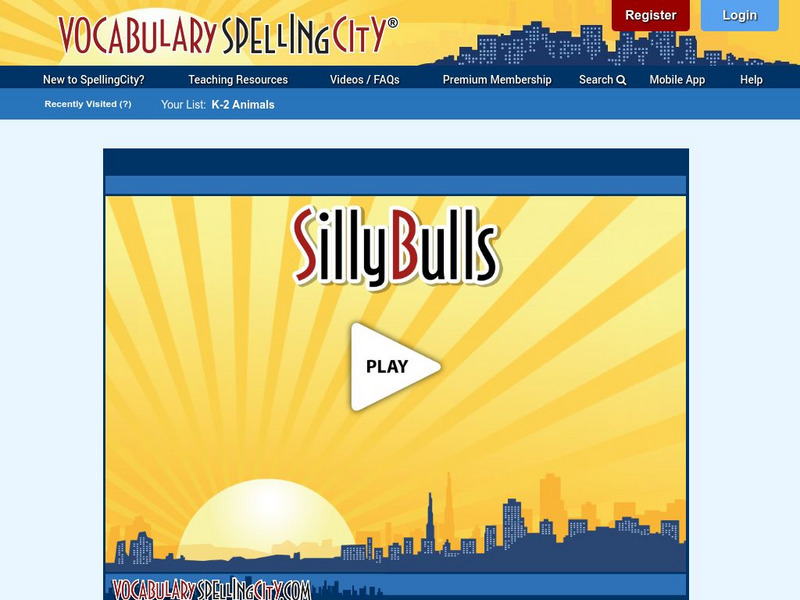


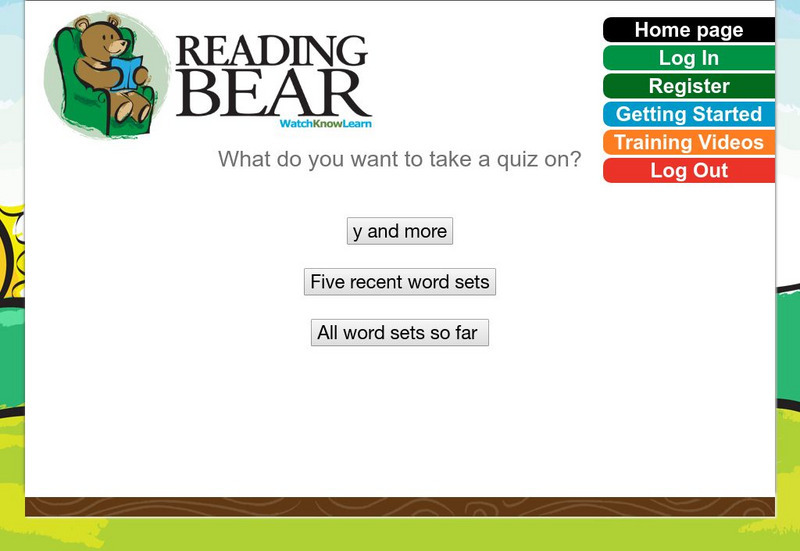
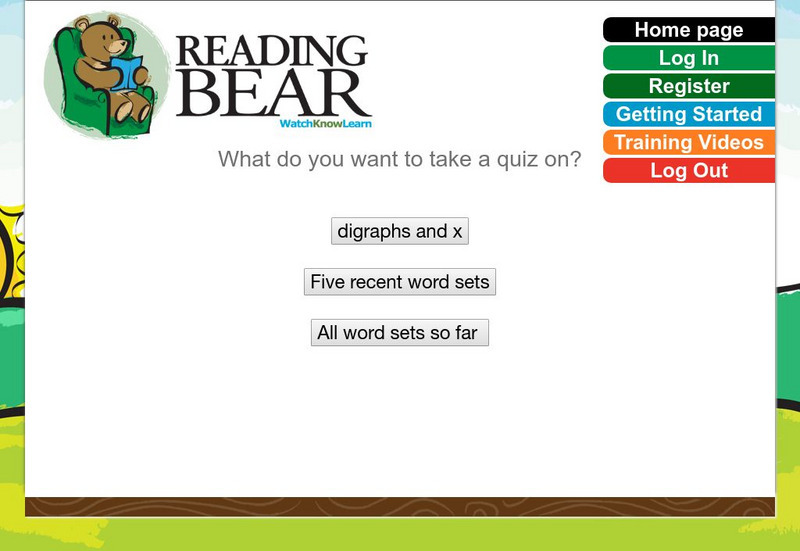







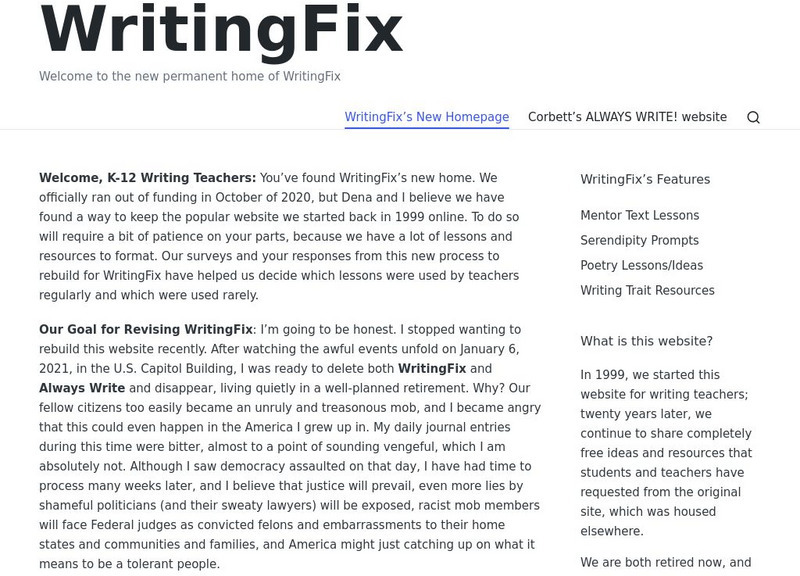

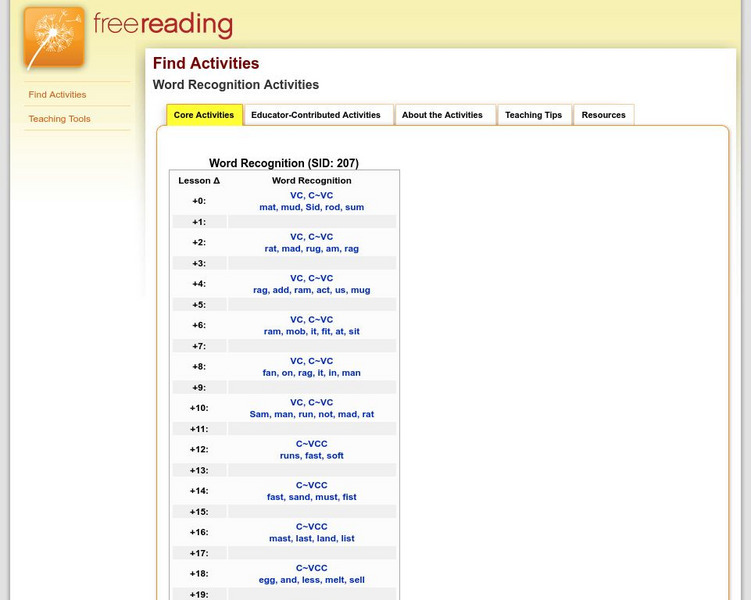
![Tvo Kids: Games: Animal Who? [Learn the Alphabet] Interactive Tvo Kids: Games: Animal Who? [Learn the Alphabet] Interactive](https://content.lessonplanet.com/knovation/original/71372-e82d7ab36f7f1af5708a01c71c8a0d7a.jpg?1661496102)
